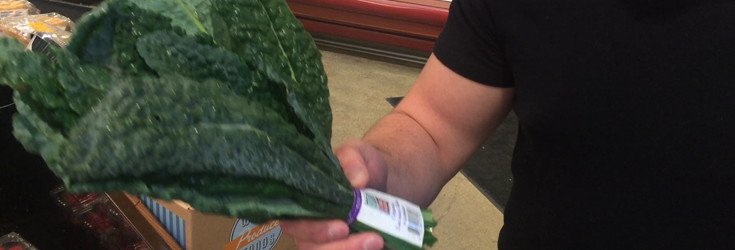How to Buy Organic Food for Cheap at The Grocery Store

When it comes to eating healthy with high quality organic ingredients, the biggest issue I hear from you guys has to do with the heightened cost of buying organic. The truth is, a lot of organic food IS expensive, but there’s a number of ways to really save when it comes to grocery stores like Whole Foods and others.
Here’s my biggest tip on how to buy organic food for cheap:
What saving big really comes down to is avoiding most pre-packaged products. When you buy pre-packaged foods, like sushi rolls or organic kale chips, you’re really paying for what the company has already done to the base ingredients of the product — not the ingredients themselves.
As you can see in the video, I highlight this example using a bag of kale chips. The kale chips came in at around $6, and only contained a small amount of kale in the bag, while a large amount of raw kale was only $1.99 in the produce section. The raw kale for $1.99 could produce far more food, and is way less expensive, because it’s not just about the ingredients in the kale chips. You’re paying for the kale chip manufacturing company to purchase the raw kale, dehydrate it, process it on their equipment, spice it, ship it to Whole Foods, and then leave room for a profit.
With the raw kale, you’re paying much more so for the actual product itself. Does that make sense?
This is my top rule for saving big at the grocery store while still buying organic, and it’s an accessible tool for everyone reading to help cut costs while also preparing their own food (another plus). Here are another few strategies below.
Additional Organic Food Saving Tips
1. Buy In Bulk
Buying in bulk, especially at stores like Costco, can really save you big in the long run. Organic grains and cereals will last up to a year when stored properly, and even organic fruits and vegetables can be frozen to be pulled out later for stir frys and smoothies.
2. Join a ‘CSA’
Community supported agriculture programs will often deliver a box of local, organic produce and other food to your door for a small fee. These organizations save not only money, but time. If you can’t make it to the grocery store, then have it delivered. You’ll also be supporting local businesses.
3. Join a Co-Op
These organic cooperatives are growing. More and more cities offer fresh produce, breads, dairy, and meats to the people who sign up for their fresh foods. You can use a co-op directory service to find one near you, and score some super cheap, healthy eats.

Don’t forget to check the clearance section. It’s common to find deals there.